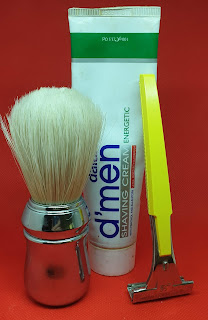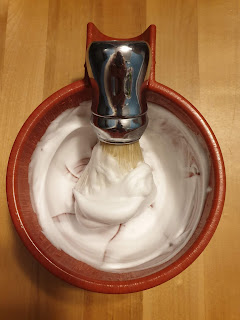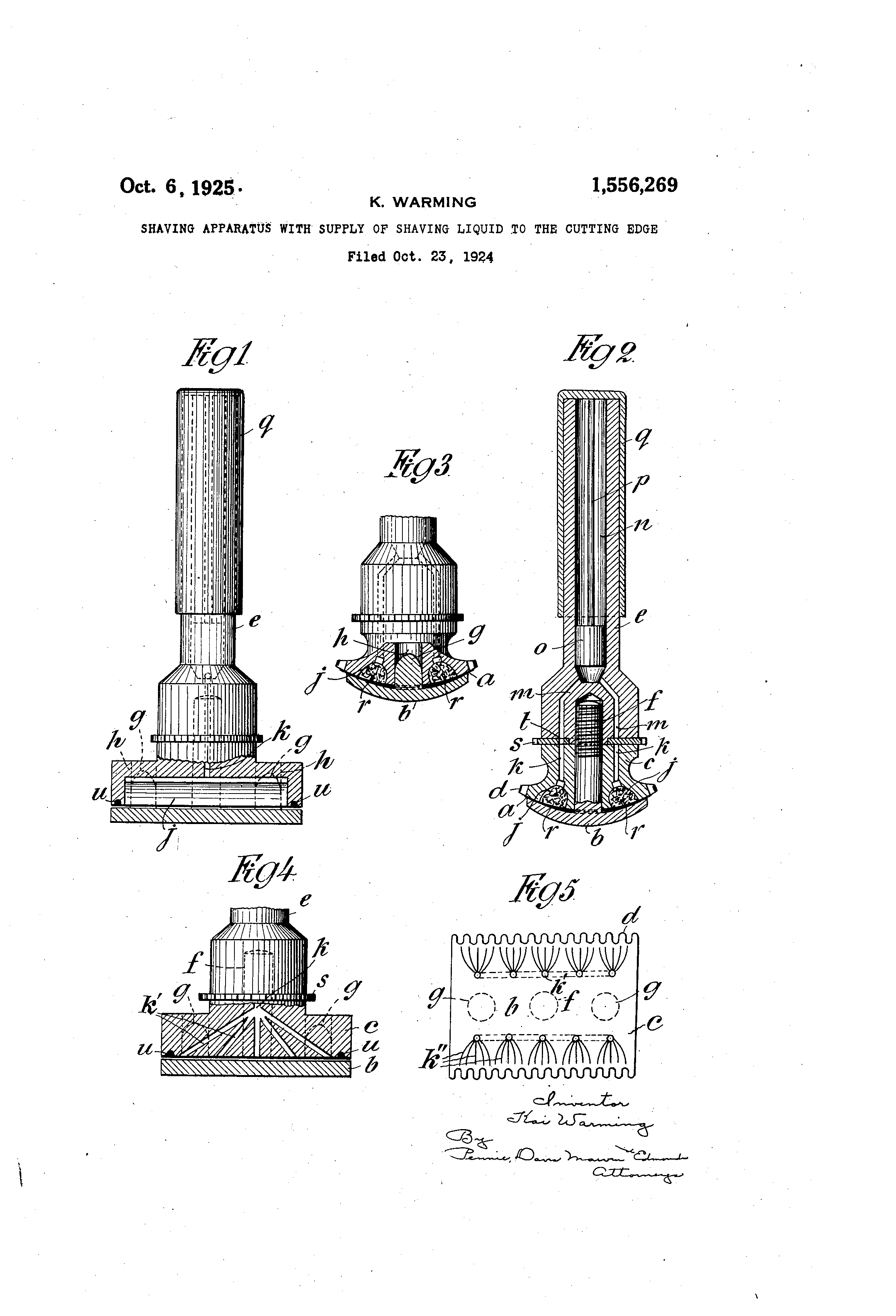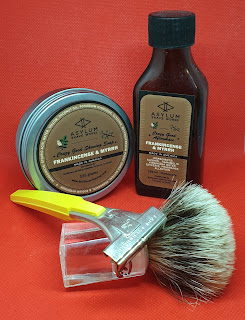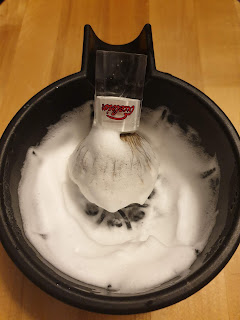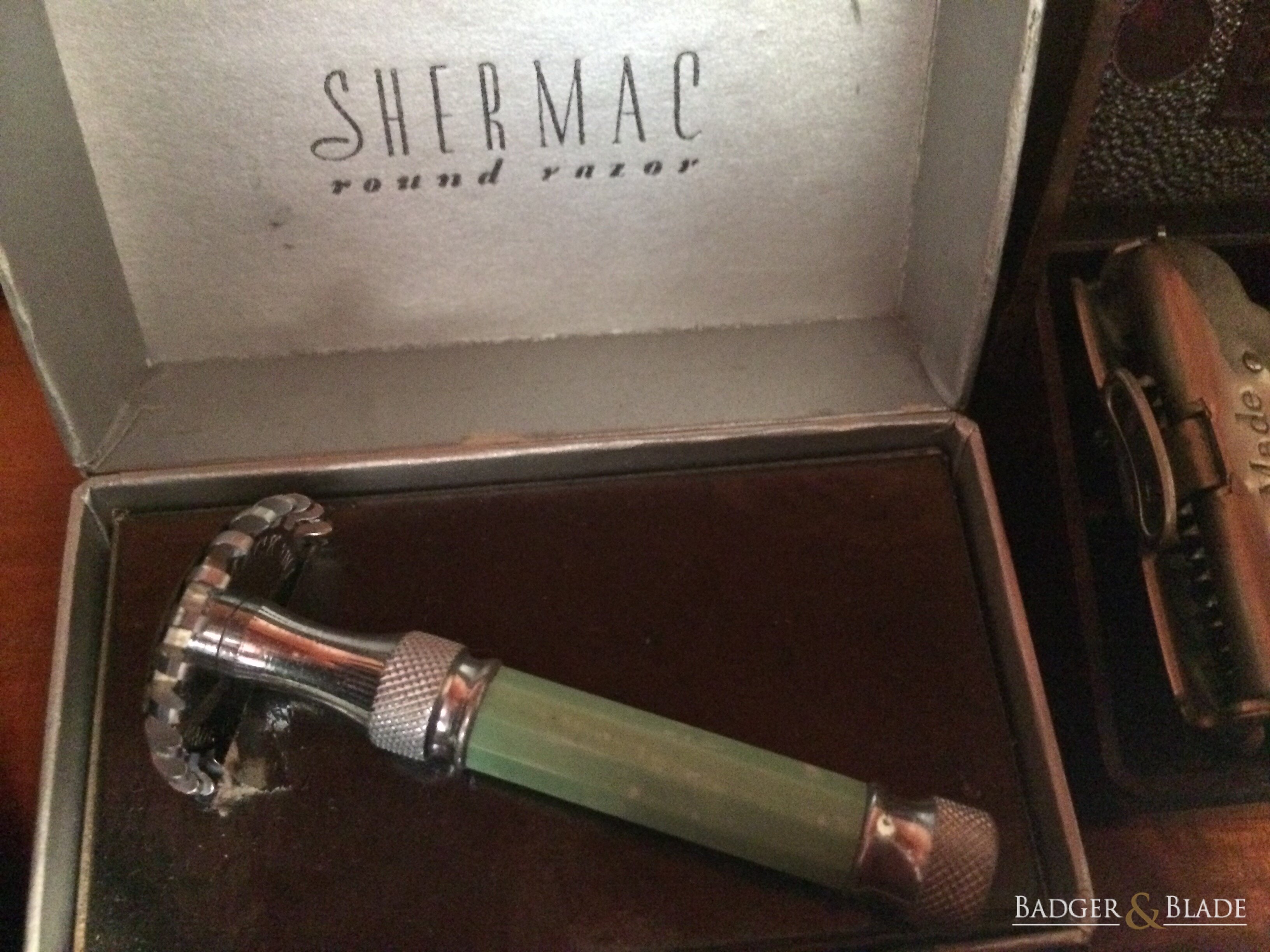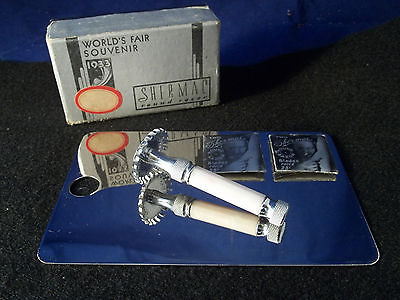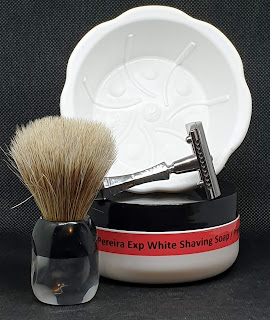Razor: Schick “Lady Eversharp”
Blade: Proraso Injector
Brush: Omega #10048
Lather: Dalane d’men Energenic
Aftershave: Body Shop Macau Root Energetic Face Protection
Additional Care: Alum Block, BullDog Original Beard Oil, & Pereira Shavery Boomerang Beard Comb
Monthly Archives: July 2019
Brushless razor?
Brushless creams saves time… or so I’m told. If you could do away with the whole ‘putting lather on before shaving’, it stands to reason that you should save even more time… or at least cut down on the clutter in the bathroom. So that might bave been on Kai Warming’s mind when he patented his “Shaving apparatus with supply of shaving liquid to the cutting edge” back in 1924.
Mr Warming – a Dane living in Copenhagen – stated in his patent that:
It is well known that shaving is rendered difficult if the lather or the shaving-liquid used is dried up or quite absorbed by the skin or the hair of the beard.
Hmm. Get a better shaving soap, or design an overly complex razor to supply the skin with a small quantity of suds or water? I think Kai had a little too much spare time…
So what he designed was a fairly normal DE, but with a hollow handle and small channels running from the hollow handle and into the base plate. As an added complexity – and possible to avoid spraying the bathroom with suds and water – he included a small rotating disk (S) in the channels, that let the shaver select which half of the razor water was spraying from as well as turning the spray on and off… at least until corrosion made the disk stick.
Just how the shaving liquid – be it “water, suds, glycerine, eau de cologne or olive oil” – was to be encouraged to move from the handle to the base plate is a little unclear to me; the patent mentions that the handle would be “displaceable as a unit by exertion of an axial pressure by hand, thereby supplying liquid from the said bore to the said cavity”… I can only read that as saying you would pump the handle to get liquid out.
The patent is long expired if a machinist out there feels adventurous… just don’t expect to sell much more than Kai did, even if you use olive oil as your shave liquid.
Shave of the day 15th July
Razor: Schick “Lady Eversharp”
Blade: Proraso Injector
Brush: Semogue TSN LE 2012
Pre-Shave: The Lavish Gentleman Natural Strength Oil Cleanser
Lather: Asylum Shave Works Frankincense & Myrrh
Aftershave: Asylum Shave Works Frankincense & Myrrh
Additional Care: Alum Block, Gentlemen of Sweden Original Beard Oil, & Pereira Shavery Boomerang Beard Comb
Shave of the day 12th July
The Science Of Blade Sharpness
There is an interesting article over on Sharpologist (adblocker recomended) on “The Science Of Blade Sharpness”; states and graphs and other interesting reading that I found well worth the time.
Or you could just try a lot of different blades until you find the best one for you – something you should probably do anyway, but reading this article can give you an idea of where to begin.
Shave of the day 10th July
Shermac round razor for under-arm shaving
Remember Joseph J. Schermack, Jr. and the ladies underarm razor he filed a patent for in 1931? That razor might never have made it to production, but the Shermac did… basically the razor he patented but without the “upstanding diametrically opposed segmental portions overlapping the cutting edge of the blade” that turned the round razor into a double edged design. The Shermac was, in effect, a single edge razor… one where the edge wrapped all around the blade.
I can find no patent covering the Shermac; it could simply be that Joseph J didn’t consider it to be different enough from his patented razor to file a new one, or it could be that the US patent office didn’t consider it patentable. The Shermac certainly looks easier to both manufacture and use than the razor described in the patent.
Allegedly the Shermac is pretty heavy for the size; to me this implies a cast baseplate and cap, which would be both cheaper and easier than machining them.
Even with the improvements from the patent, the Shermac seems to have been little more than a passing novelty fad in the market – the kind of thing you would buy as a gift for someone you couldn’t think of a better present for… and making the blades would still be more difficult and expensive than a regular straight blade.
A couple of photos I found online:
Shave of the day 8th July
Razor: Asylum Shave Works Evolution
Blade: PolSilver Super Iridium
Brush: Vie-Long #14033
Pre-Shave: The Lavish Gentleman Natural Strength Oil Cleanser
Lather: Pereira Samle
Aftershave: Krampert’s Finest 80 Below
Additional Care: Alum Block, Gentlemen of Sweden Original Beard Oil, & Pereira Shavery Boomerang Beard Comb
Keep happy with cool shaves
Ladies’ underarm razor – a patent filed in ’31
Ever watched someone shave under their arms, or shaved your own armpits? Did it ever strike you that using a straight blade isn’t the best suited for shaving a concave surface? You’re not the first… back in 1931 Joseph J Schermack filed a patent where he pointed out that an
…ordinary safety razor has a straight cutting edge and therefore is not adapted for shaving a concave contour, as it would be apt to cut or scratch the flesh.
The guy had a point, even if his invention seems to have failed in the marketplace – although it failed, I believe, due to other reasons than being misconceived.
Judging by the drawing in the patent, the underarm razor is a fairly straightforward three piece razor but with a circular head. Mr Schermack seems to have been stuck to the idea of making his razor a double edged razor, despite suggesting a circular blade that was edged all around. Or in his own words:
Figure 2 is a plan view of the circular crenellated guard, with upstanding diametrically opposed segmental portions overlapping the cutting edge of the blade on opposite sides of the latter.
To me this would be wasting part of the cutting edge, as well as meaning the shaver would have to pay close attention to how the razor twisted while shaving. Compare Mr Schermack’s invention to the Curvefit or the Shermac razors( both of which was manufactured and sold), and you’ll see two ways to avoid that problem.
I suspect that the main reason Mr Schermack’s invention seems to have failed is the cost of manufacturing the blades (inherently more costly than straight edged blades).

